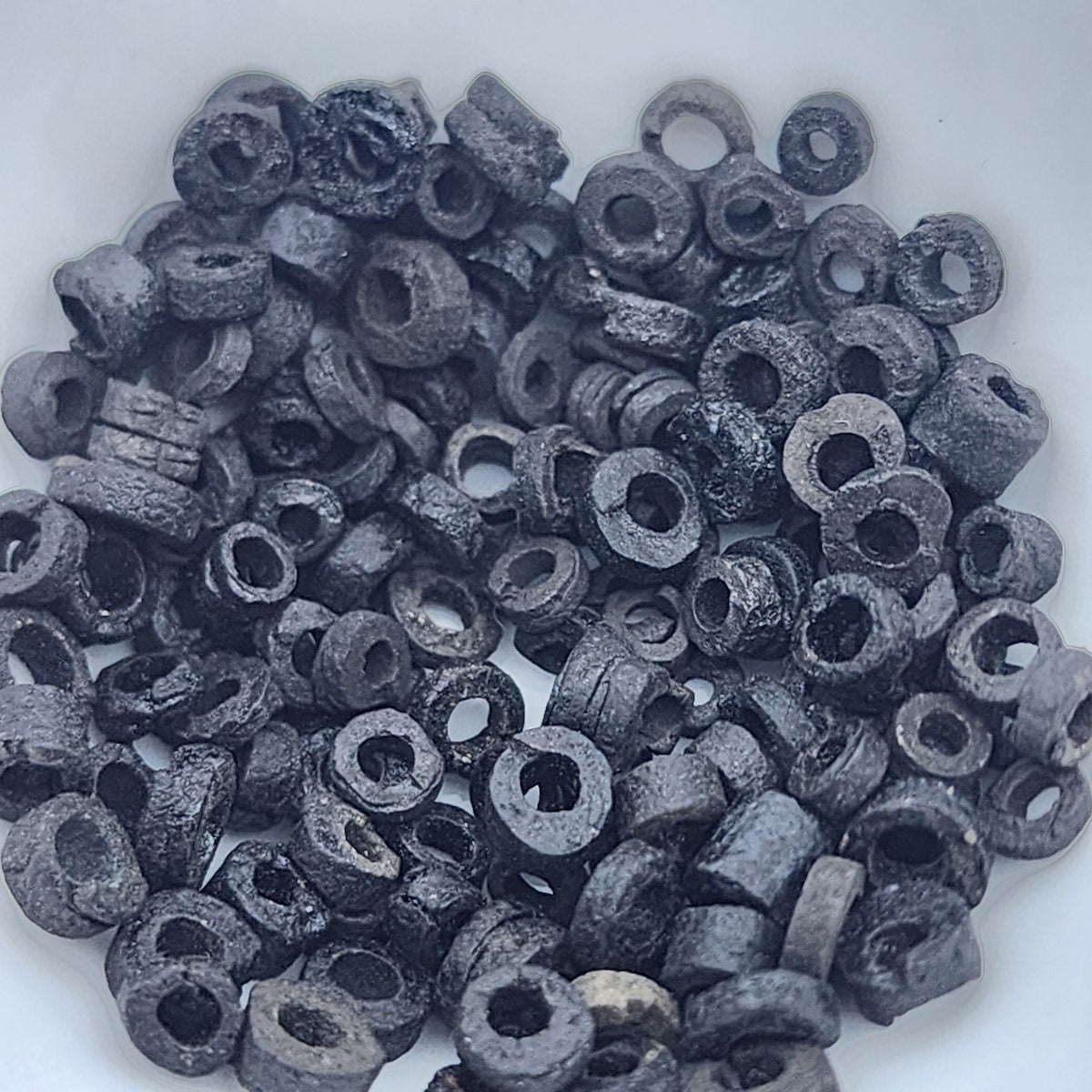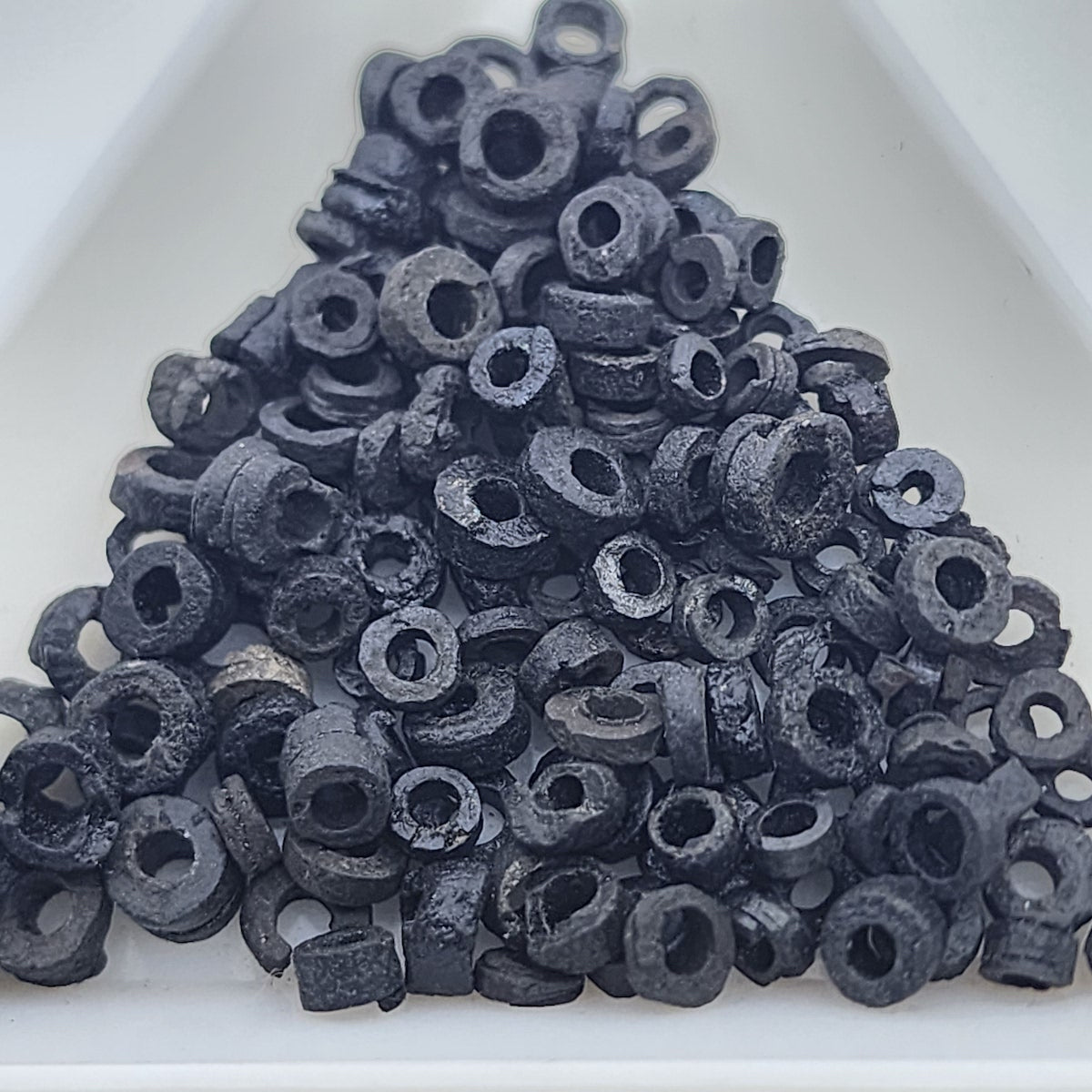Black (5 grams) - Vintage Faience Clay Egyptian Mummy Beads
Black (5 grams) - Vintage Faience Clay Egyptian Mummy Beads is backordered and will ship as soon as it is back in stock.
Pickup available at Bead Shack
Usually ready in 24 hours
Quantity per pack: 5 grams (about 150-200 beads) which will bead around 50cm in length once strung. Every bead is different, so the weight might give +/- this amount.
You are buying 5 grams of these very old beads.
Colour: 'Black'
Mummy beads in this instance doesn't refer to mother/baby as in the modern silicone beads - rather they are handmade clay beads that were used as funerary goods with the mummies in Egypt. These beads were less expensive for the poorer people, who made many strands and almost completely covered the body in these beads.
In 1920s there was a revival of everything Egyptian, including jewellery. These mummy beads are probably around circa 1950s, and were made in the south of Egypt.
The colours of faience beads usually reflected the colours of their surroundings, from muted tones to vibrant blues.
The beads themselves can be so many shapes, there's no rhyme or reason to them, but they will make great jewellery using them alone, or as little spacers between other larger beads. Some of the beads (because of their age and the way they have been made) can be a bit brittle, so won't work well in 'high traffic' areas in some designs.
The history, colours and makeup of these beads make them really unique to work with, and a lot of fun. Pop a few in your earring designs, throughout your necklaces - for bracelets beware they can be a bit fragile, so place the clay faience between larger beads that will stop them from clanging on the table when you move your wrist.
About these beads --- Ancient faience beads were made from a non-clay based ceramic of quartz and sand, the oldest known artificial substance, used in Egypt five and a half thousand years ago. The ceramic was rolled or calved then glazed before being fired. Usually the paste was rolled around a reed or a string.
Modern faience --- is made from crushed soapstone which results in a smoother finish than the ancient version. Although, you will note from the photos that the beads are still pretty rough and ready!





